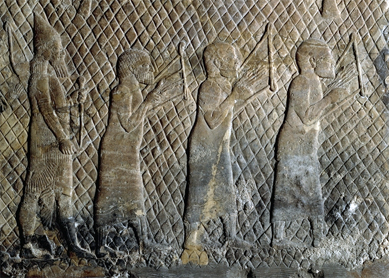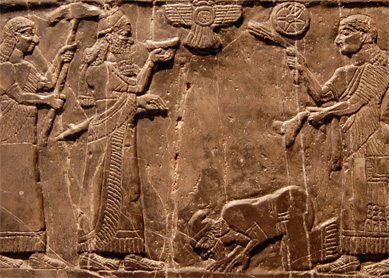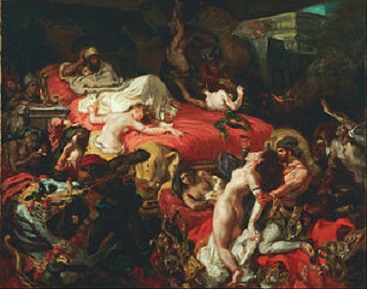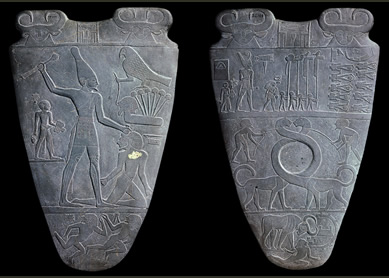Even though Nineveh did not take “three days to cross” (
The northern kingdom of Israel, for instance, was destroyed in the eighth century B.C.E. by the Assyrians, a fact attested to in both Assyrian and biblical sources (see
The luster of Nineveh’s former glory is still detectable in its remains, most famously in the reliefs from the palaces of the kings Sennacherib and Ashurbanipal. Assyrian kings frequently adorned their palaces with wall reliefs and other forms of sculpture. These often-elaborate reliefs were not merely decorative, nor were they historical “records,” as we might think of them today. Palatial wall reliefs were religious, political, and mythological in nature and were primarily concerned with demonstrating the king’s legitimacy, piety, and prestige. Dominating the reliefs are scenes of the king’s deeds, especially in battle.
Sennacherib had a palace at Nineveh that contains some 70 rooms adorned with finely crafted limestone relief work. Room 36 is of particular interest. It depicts Sennacherib’s siege of Lachish, a Judahite city that Sennacherib attacked while on his third campaign (701 BCE). The remains of the siege ramp used by Sennacherib’s army, in fact, are still visible at the site. In one scene, the king is shown siting on a throne, receiving captives and observing the battle. To the left of the king, several Assyrian soldiers publicly flay captured Judahites. Sennacherib has his armies represented as brutal, even savage warriors whose overwhelming power assures them victory at every turn.
The palace of Ashurbanipal (ruled 668–circa 630 B.C.E.) at Nineveh also preserves a stunning set of wall reliefs. Chief among them are reliefs depicting Ashurbanipal in mortal combat with fierce lions. In one, the king dominates the lions from a chariot, thrusting a long spear into his prey. Elsewhere in the sequence, Ashurbanipal fights on foot, with only his hands and a sword (see also
Bibliography
- Winter, Irene. “Art in Empire: The Royal Image and the Visual Dimensions of Assyrian Ideology.” Pages 359–81 in Assyria, 1995. Edited by S. Parpola and R. M. Whiting. Helsinki: University Press, 1997
- Reade, Julian. Assyrian Sculpture. Cambridge, Mass.: Harvard University Press, 1983.
- Lanfranchi, Giovanni B. “The Library at Nineveh.” Pages 147–56 in Capital Cities: Urban Planning and Spiritual Dimensions. Edited by Joan Goodnick Westenholz. Jerusalem: Bible Lands Museum, 1998.
- Uehlinger, Christoph. “Clio in a World of Pictures: Another Look at the Lachish Reliefs from Sennacherib’s Southwest Palace at Nineveh.” Pages 221–305 in Like a Bird in a Cage: The Invasion of Sennacherib in 701 BCE. Edited by Lester L. Grabbe. Journal for the Study of the Old Testament Supplement Series 363. London: Sheffield Academic Press, 2003.
- Stronach, David, and Kim Codella. “Nineveh.” Pages 144-148 in The Oxford Encyclopedia of Archaeology in the Near East. Edited by Eric M. Meyers, David Stronach, and Kim Codella. New York: Oxford University Press, 1997.
- Russell, John Malcolm. Sennacherib’s Palace without Rival at Nineveh. Chicago: University of Chicago Press, 1991.




